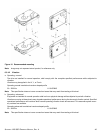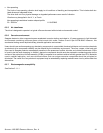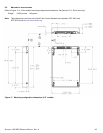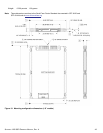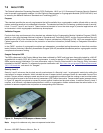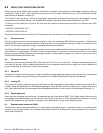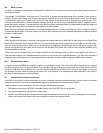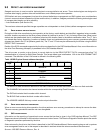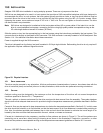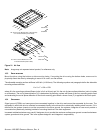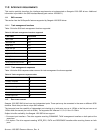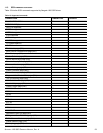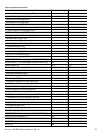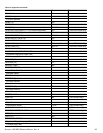
SEAGATE 1200 SSD PRODUCT MANUAL, REV. A 48
9.0 DEFECT AND ERROR MANAGEMENT
Seagate continues to use innovative technologies to manage defects and errors. These technologies are designed to
increase data integrity, perform drive self-maintenance, and validate proper drive operation.
SCSI defect and error management involves drive internal defect/error management and SAS system error considerations
(errors in communications between the initiator and the drive). In addition, Seagate provides the following technologies used
to increase data integrity and drive reliability:
• Auto-Reallocation (see Section 9.4)
The read error rates and specified storage capacities are not dependent on host (initiator) defect management routines.
9.1 DRIVE INTERNAL DEFECTS/ERRORS
During the initial drive manufacturing test operation at the factory, media defects are identified, tagged as being unusable,
and their locations recorded on the drive primary defects list (referred to as the “P’ list). At factory format time, these known
defects are also deallocated, that is, marked as retired and the location listed in the defects reallocation table. The “P” list is
not altered after factory formatting. Locations of defects found and reallocated during error recovery procedures after drive
shipment are listed in the “G” list (defects growth list). The “P” and “G” lists may be referenced by the initiator using the READ
DEFECT DATA command.
Details of the SCSI commands supported by the drive are described in the SAS Interface Manual. Also, more information on
the drive Error Recovery philosophy is presented in the SAS Interface Manual.
The drive uses a vendor unique format to report defects via the READ DEFECT DATA command pending T10
standardization of a format for Solid State Devices. This format defect type is defined as 110b in the SCSI FORMAT UNIT
command. The definition of the 110b format is defined in the following table.
Table 12SSD Physical format address descriptor
Bit
Byte
7 6 5 4 3 2 1 0
0 (MSB)
MEDIA ID
1 (LSB)
2 CHANNEL
3 DIE
4 (MSB)
BLOCK
5 (LSB)
6 RESERVED
7 VENDOR UNIQUE
The MEDIA ID field contains an identifier for the flash controller for devices that utilize more than one flash controller.
The CHANNEL field contains the channel number within the corresponding Flash Controller.
The DIE field contains the die number within channel.
The BLOCK field contains the block number within the die.
The VENDOR UNIQUE field may contain vendor unique information.
9.2 DRIVE ERROR RECOVERY PROCEDURES
When an error occurs during drive operation, the drive performs error recovery procedures to attempt to recover the data.
The error recovery procedures used are not user changeable.
9.3 SAS SYSTEM ERRORS
Information on the reporting of operational errors across the interface is given in the SAS Interface Manual. The SSP
Response returns information to the host about numerous kinds of errors. The Receive Diagnostic Results reports the results
of diagnostic operations performed by the drive.
Status returned by the drive to the initiator is described in the SAS Interface Manual. Status reporting plays a role in systems
error management and its use in that respect is described in sections where the various commands are discussed.



